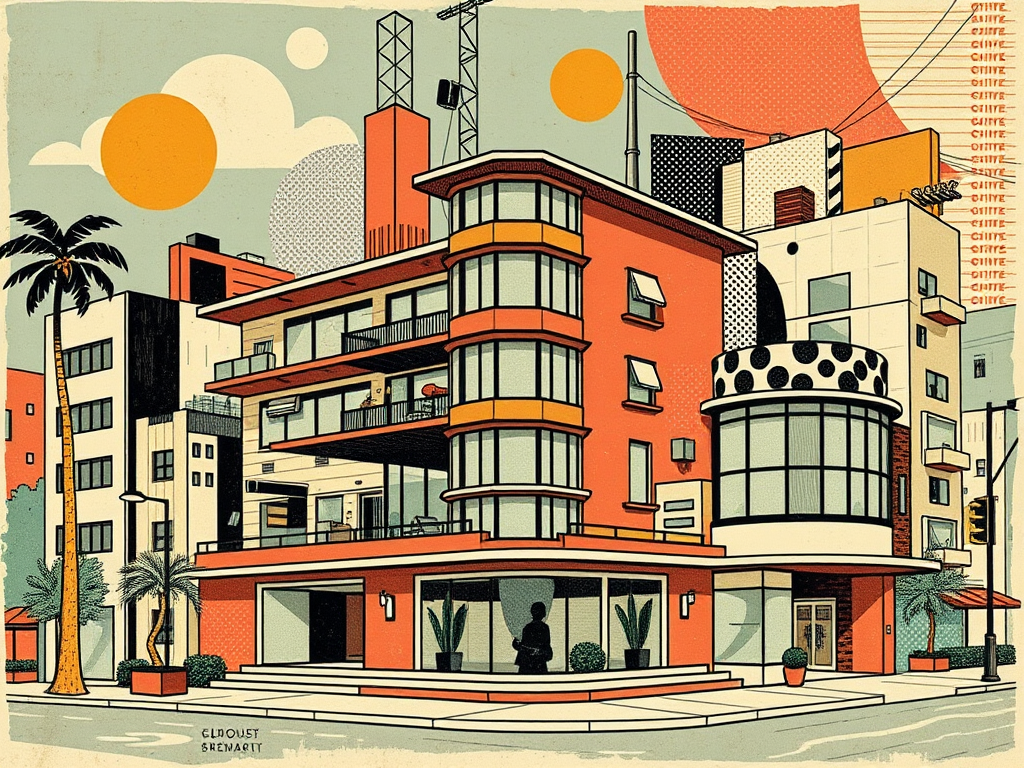
Modern Greek Architecture: How New Builds Combine Luxury and Tradition to Attract Buyers
Reading time: 12 minutes
Table of Contents
- Introduction
- The Evolution of Greek Architecture
- Key Elements of Modern Greek Design
- Blending Tradition with Contemporary Aesthetics
- Sustainable Features in Modern Greek Homes
- The Impact on Real Estate Markets
- Case Studies: Successful Modern Greek Developments
- Challenges and Opportunities
- Conclusion
- FAQs
Introduction
Greece, a country steeped in ancient history and architectural marvels, is experiencing a renaissance in its building industry. Modern Greek architecture is emerging as a powerful force, seamlessly blending the nation’s rich cultural heritage with cutting-edge design principles. This fusion is not only reshaping the country’s skyline but also attracting a new wave of discerning buyers, both domestic and international. In this comprehensive analysis, we’ll explore how contemporary Greek architects and developers are crafting luxurious properties that pay homage to tradition while embracing the future.
The Evolution of Greek Architecture
To fully appreciate the modern Greek architectural movement, it’s essential to understand its historical context. Greek architecture has undergone significant transformations over millennia, from the iconic columns of ancient temples to the Byzantine domes and the vernacular styles of island dwellings.
Ancient Foundations
The classical period of Greek architecture, characterized by its emphasis on proportion, harmony, and mathematical precision, laid the groundwork for Western architectural principles. The Doric, Ionic, and Corinthian orders, with their distinctive column styles, continue to influence modern design aesthetics.
Byzantine Influence
Following the classical era, Byzantine architecture introduced new elements such as domed structures and intricate mosaics. This period saw a shift towards more ornate designs and the integration of Christian symbolism into architectural forms.
Vernacular Traditions
Regional variations in Greek architecture developed over time, responding to local climates, available materials, and cultural practices. The white-washed cubic houses of the Cyclades and the stone mansions of the Peloponnese exemplify these diverse vernacular styles.
Key Elements of Modern Greek Design
Contemporary Greek architecture draws inspiration from its rich past while incorporating modern technologies and sustainable practices. The result is a unique aesthetic that appeals to luxury buyers seeking authenticity and innovation.
Clean Lines and Geometric Forms
Modern Greek designs often feature clean, minimalist lines that echo the simplicity of ancient Greek temples. Geometric shapes are used to create striking facades and interior spaces that feel both timeless and contemporary.
Indoor-Outdoor Living
Embracing the Mediterranean climate, new Greek homes prioritize seamless transitions between indoor and outdoor spaces. Large windows, sliding glass doors, and expansive terraces blur the boundaries between the built environment and nature.
Natural Materials
Local stone, wood, and marble are extensively used in modern Greek architecture, providing a tactile connection to the land and its traditions. These materials are often left in their natural state or minimally processed to preserve their authentic character.
Blending Tradition with Contemporary Aesthetics
The success of modern Greek architecture lies in its ability to honor cultural heritage while meeting the demands of contemporary lifestyles. This delicate balance is achieved through thoughtful design choices and innovative interpretations of traditional elements.
Reinterpreting Classical Motifs
Architects are finding creative ways to incorporate classical Greek motifs into modern designs. For example, a sleek interpretation of a Doric column might serve as a focal point in a minimalist living room, or a stylized Greek key pattern could be integrated into a custom-designed floor.
Color Palettes Inspired by Nature
The iconic blue and white of Greek island architecture is being reimagined with sophisticated color schemes that draw from the Greek landscape. Earth tones, sea blues, and sun-bleached neutrals create a harmonious connection between the built environment and its natural surroundings.
Sustainable Features in Modern Greek Homes
Sustainability is a key focus in modern Greek architecture, reflecting both global trends and the country’s commitment to preserving its natural beauty. Innovative eco-friendly features are becoming standard in luxury Greek properties.
Energy Efficiency
New builds incorporate advanced insulation techniques, solar panels, and smart home systems to minimize energy consumption. These features not only reduce environmental impact but also appeal to buyers looking for long-term cost savings.
Water Conservation
In a country where water scarcity can be a concern, modern Greek homes often include rainwater harvesting systems and drought-resistant landscaping. These measures ensure responsible water use without compromising on luxury amenities like infinity pools and lush gardens.
The Impact on Real Estate Markets
The emergence of modern Greek architecture is having a significant impact on the country’s real estate market, particularly in the luxury segment. Properties that successfully blend traditional elements with contemporary design are commanding premium prices and attracting international attention.
Investment Opportunities
Savvy investors are recognizing the potential of modern Greek properties, particularly in areas like the Peloponnese. The region’s combination of historical significance and natural beauty makes it an ideal location for innovative architectural projects. For those interested in exploring these opportunities, property for sale in peloponnese offers a range of options that showcase the best of modern Greek design.
Tourism and Second Home Markets
The appeal of modern Greek architecture extends beyond permanent residences. Luxury vacation rentals and second homes that offer a contemporary Greek experience are in high demand, driving development in popular tourist destinations and contributing to the country’s economic recovery.
Case Studies: Successful Modern Greek Developments
To illustrate the impact of modern Greek architecture, let’s examine a few standout projects that have garnered international acclaim and set new standards for luxury living in Greece.
The Aman Villas at Amanzoe
Located in Porto Heli, this development exemplifies the successful integration of classical Greek elements with contemporary luxury. The villas feature clean lines, expansive outdoor spaces, and a color palette that blends seamlessly with the surrounding landscape. The use of local stone and traditional building techniques alongside modern amenities has created a uniquely Greek yet thoroughly modern living experience.
One&Only Kéa Island
This upcoming resort and residential development on the island of Kea showcases how modern Greek architecture can enhance and preserve natural environments. The project’s design emphasizes sustainability, with buildings that seem to emerge organically from the terrain. The use of local materials and traditional building methods, combined with cutting-edge sustainable technologies, sets a new benchmark for eco-luxury in Greece.
Challenges and Opportunities
While the modern Greek architectural movement presents exciting possibilities, it also faces several challenges that must be navigated carefully.
Balancing Progress and Preservation
One of the primary challenges is maintaining the delicate balance between modernization and preservation of cultural heritage. Architects and developers must work closely with local communities and preservation authorities to ensure that new projects respect and enhance the existing architectural landscape.
Regulatory Hurdles
Greece’s complex building regulations and permitting processes can pose obstacles to innovative architectural projects. However, recent efforts to streamline these procedures are creating new opportunities for forward-thinking developments.
Economic Considerations
The luxury real estate market in Greece is showing signs of recovery, but economic uncertainties remain. Developers must carefully consider market demand and economic factors when planning large-scale modern architectural projects.
Conclusion
Modern Greek architecture represents a bold reimagining of the country’s rich architectural heritage. By skillfully blending traditional elements with contemporary design principles and sustainable practices, architects and developers are creating properties that appeal to a new generation of luxury buyers. These innovative projects not only enhance Greece’s architectural landscape but also contribute to the country’s economic revitalization and position in the global luxury real estate market.
As Greece continues to evolve and adapt to changing global trends, its architecture serves as a powerful testament to the enduring appeal of its cultural legacy. The fusion of ancient wisdom with modern innovation in Greek building design offers a compelling vision for the future of luxury living—one that respects the past while embracing the possibilities of tomorrow.
FAQs
-
Q: How does modern Greek architecture differ from traditional styles?
A: Modern Greek architecture incorporates clean lines, minimalist aesthetics, and sustainable features while still drawing inspiration from traditional elements like natural materials and indoor-outdoor living concepts.
-
Q: Are modern Greek homes more energy-efficient than older properties?
A: Yes, new Greek builds often include advanced insulation, solar power systems, and smart home technologies that significantly improve energy efficiency compared to older structures.
-
Q: What regions in Greece are seeing the most growth in modern architectural developments?
A: Areas like the Peloponnese, certain Cycladic islands, and upscale Athens suburbs are experiencing significant growth in modern luxury developments that blend traditional and contemporary design.
-
Q: How is modern Greek architecture influencing property values?
A: Properties featuring modern Greek architectural elements often command premium prices due to their unique blend of luxury, tradition, and sustainability, attracting both domestic and international buyers.
-
Q: What challenges do architects face when designing modern Greek homes?
A: Key challenges include navigating strict building regulations, preserving cultural heritage, and integrating sustainable features while maintaining the essence of Greek architectural traditions.

Article reviewed by Everett Bellingrath, CEO | Business Growth Consultant | Transforming Mid-Sized Companies Through Operational Efficiency & Market Expansion Strategies, on March 18, 2025


